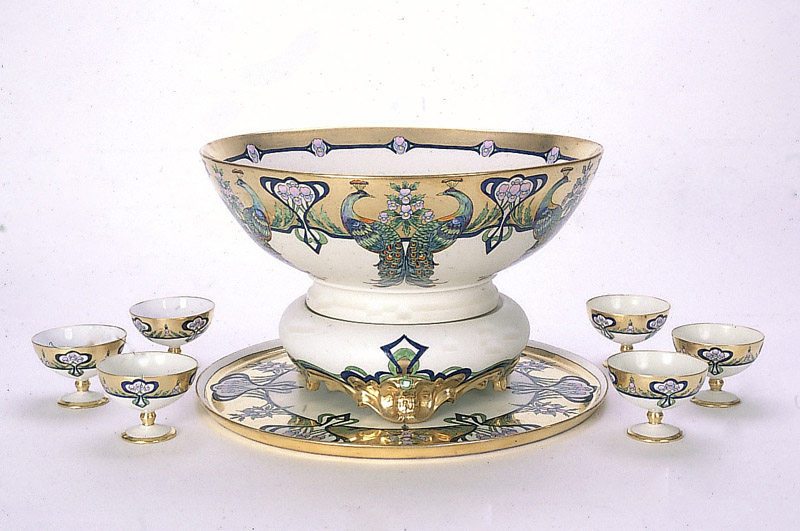
| Maker | Gertrude Armantrout |
| Date of Creation | 1914–36 |
| Location | Topeka, Shawnee County, Kansas |
| Materials | Porcelain |
| Institution | Kansas Museum of History |
| Credit Line | Estate of Marjorie Jean Davis |
| Accession Number | 2002.42.15 |
| Photo Credit | Kansas Historical Society |
Porcelain painting was a popular pursuit for women around the country in the late 19th and early 20th centuries. It was a sophisticated hobby for middle and upper class women, a respectable occupation for women who needed to work out of economic necessity, and a creative outlet for women artists, who in general did not receive the same professional status as their male counterparts. Gertrude Anderson Armantrout, artist of the pieces shown here, was born on October 11, 1891, in Topeka, KS. She studied home economics at Kansas State College and arts at Washburn College. While at Washburn, Armantrout developed her skill in porcelain painting, etching, and lithography. She painted porcelain from approximately 1906 until her death in 1964, most prolifically from 1914 to 1936. Armantrout used one of the more common processes for painting porcelain. She began with a blank on which she sketched her basic design. Blanks were purchased from catalogs, department stores, local studios, or directly from the companies producing them. Armantrout applied overglaze paints in several steps. These are mineral colors, derived from metallic salts. First offered in powder form to be mixed with oil, these paints were later available in pre-mixed tubes. Overglaze paints are translucent and require numerous firings to build up the desired color effect. She also used enamel paste (a thick glaze) to give a three-dimensional effect. Black pen work outlined many of her designs. On many of her pieces, Armantrout applied Roman gold before the last firing. Roman gold or Burnished gold was available in paste or liquid and would be burnished (polished) using a glass brush, an agate, or fine white sand to bring out a soft sheen.
